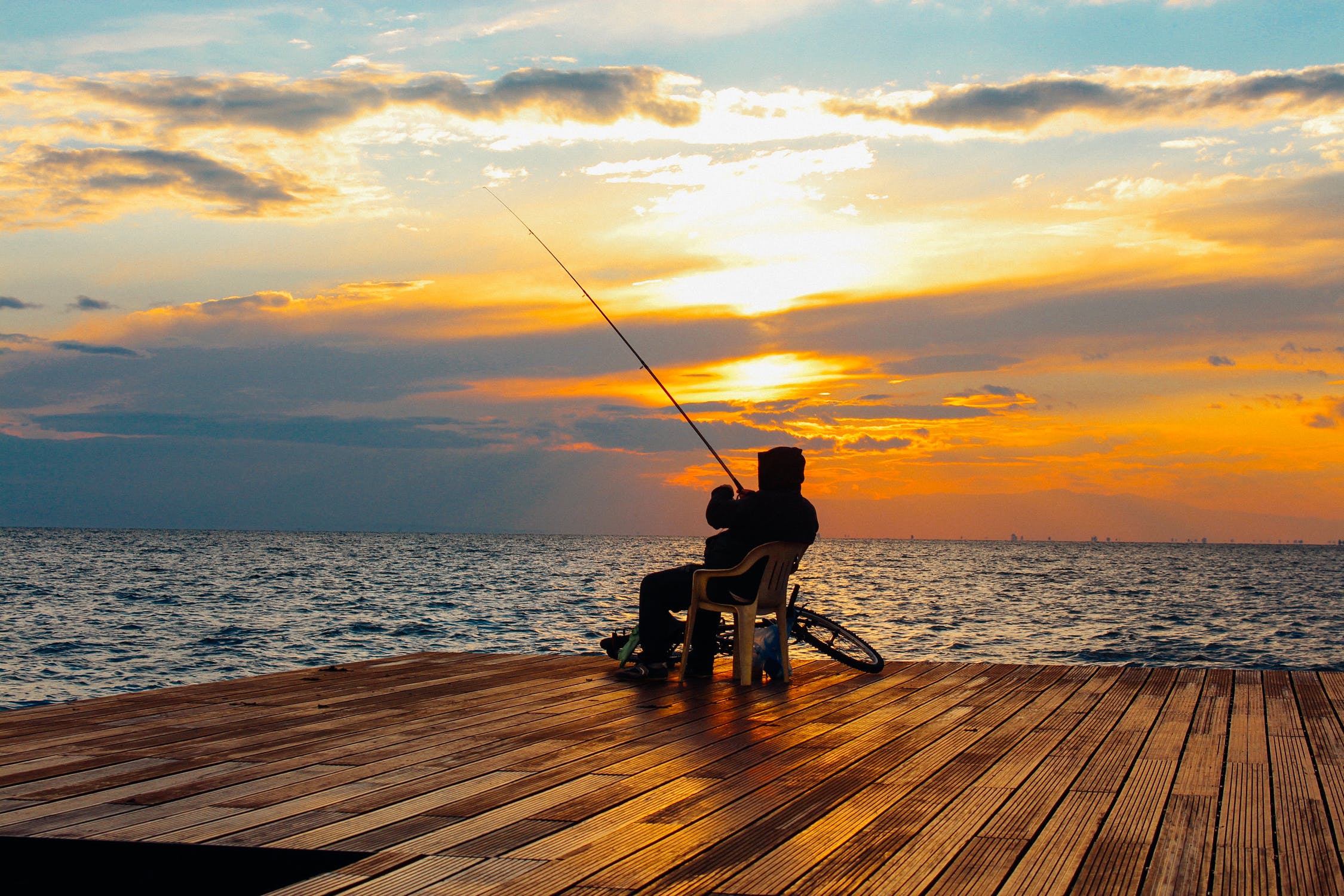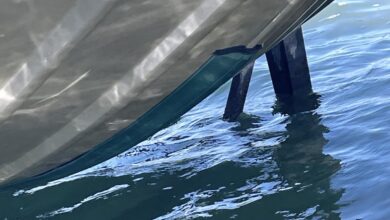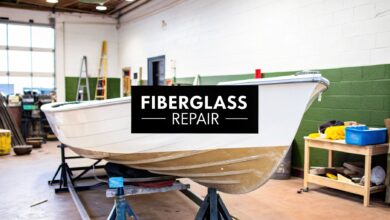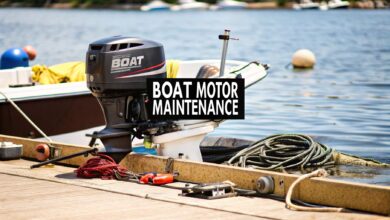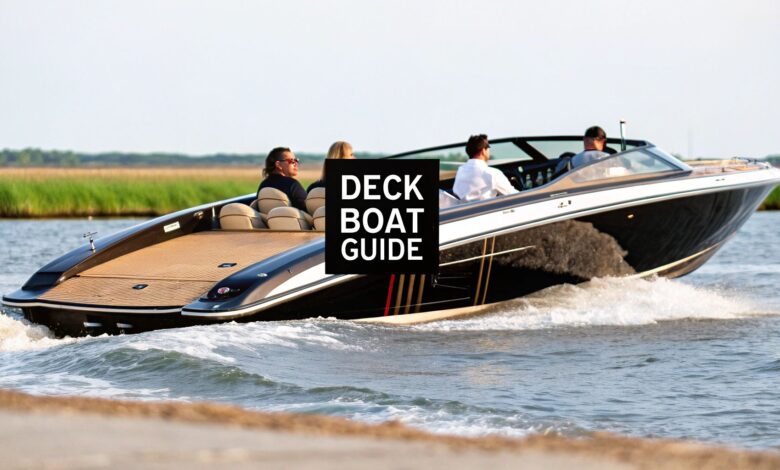
Ever wondered what you'd get if you crossed the spacious vibe of a pontoon with the zippy hull of a runabout? That's your deck boat. It’s a hybrid built for people who want the best of both worlds. It offers a stable, wide-open platform with the power for fun on the water.
Breaking Down The Deck Boat's Appeal
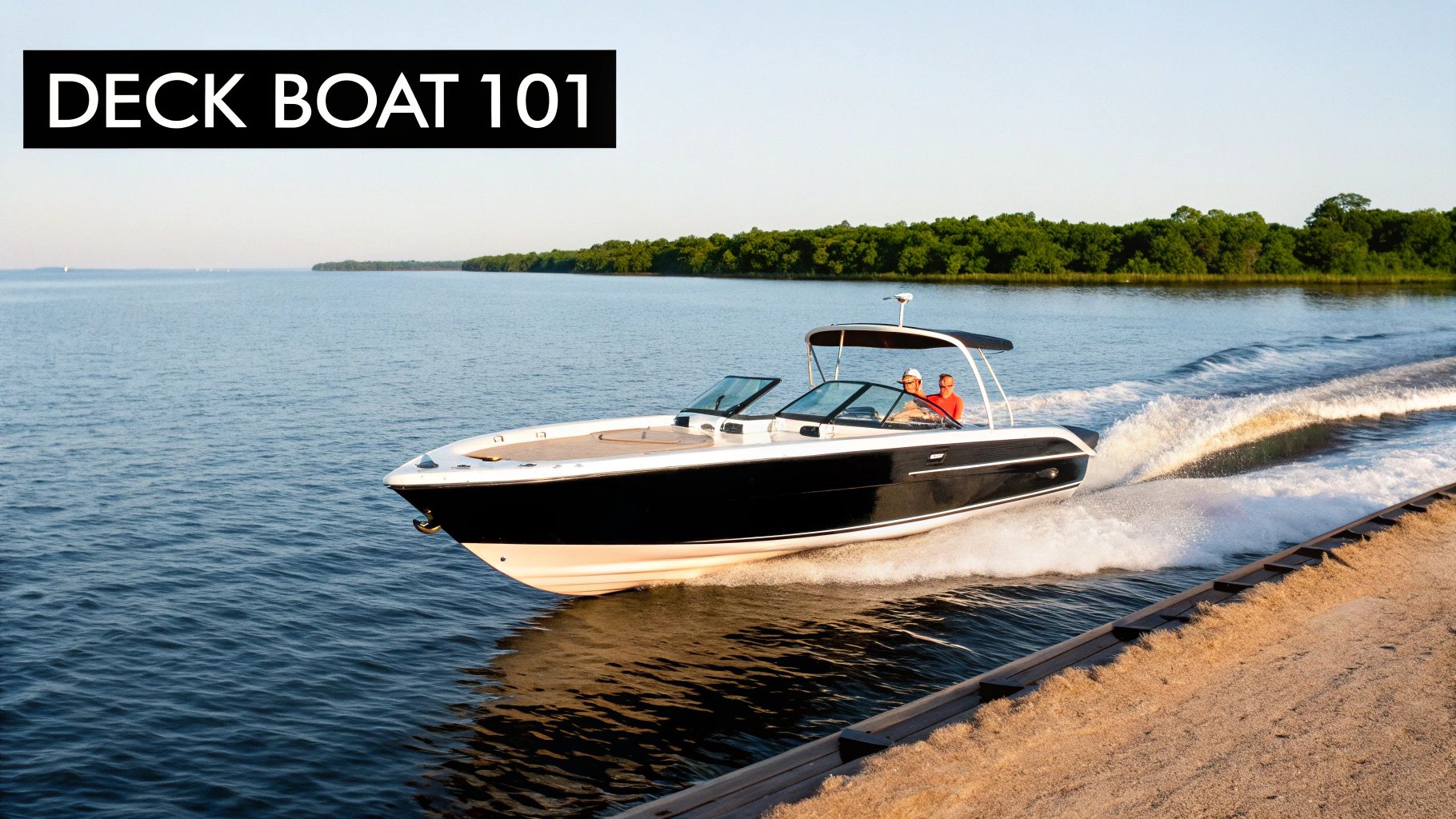
So, what really makes a deck boat tick? It's a popular style of recreational boat engineered for versatility. Think of it as the ultimate day-tripper. It handles a crowd without feeling cramped, while keeping the sporty feel of a smaller vessel.
The key is its signature wide bow. Unlike a traditional bowrider that tapers to a point, a deck boat carries its full width forward. This design opens up the front, creating a massive, single-level deck perfect for socializing. It means you can cruise with 10-12 people, tow a water skier, and drop anchor for a swim, all in one afternoon.
Performance And Comfort In One Package
The real genius of the deck boat is how it merges a spacious layout with a high-performance hull.
Deck boats are built on a V-shaped hull, which lets them cut through water smoothly and handle turns with confidence. This design provides great stability and better handling at high speeds than a flat-bottomed boat. For a deeper dive, you can explore detailed deck boat market trends and design features from industry reports.
At its core, the deck boat solves a common boater's dilemma: having to choose between space and performance. It delivers a fantastic solution that refuses to compromise, offering a sporty ride with room for everyone.
Deck Boat At A Glance
To put it all together, here’s a quick summary of what makes a deck boat what it is.
| Key Feature | Description | Primary Benefit |
|---|---|---|
| Wide, Open Bow | The boat's beam extends far forward, creating a square-like shape. | Maximizes seating and social space. |
| V-Shaped Hull | A performance-oriented hull that cuts through water. | Provides a smooth ride and nimble handling. |
| Single, Large Deck | A unified, open layout for easy movement and interaction. | Excellent for entertaining large groups. |
| Versatile Layout | Seating, storage, and amenities designed for multiple activities. | Can handle cruising, watersports, and relaxing. |
This combination is why so many families find the deck boat to be the perfect all-around vessel for a day on the lake.
The Anatomy of a Deck Boat
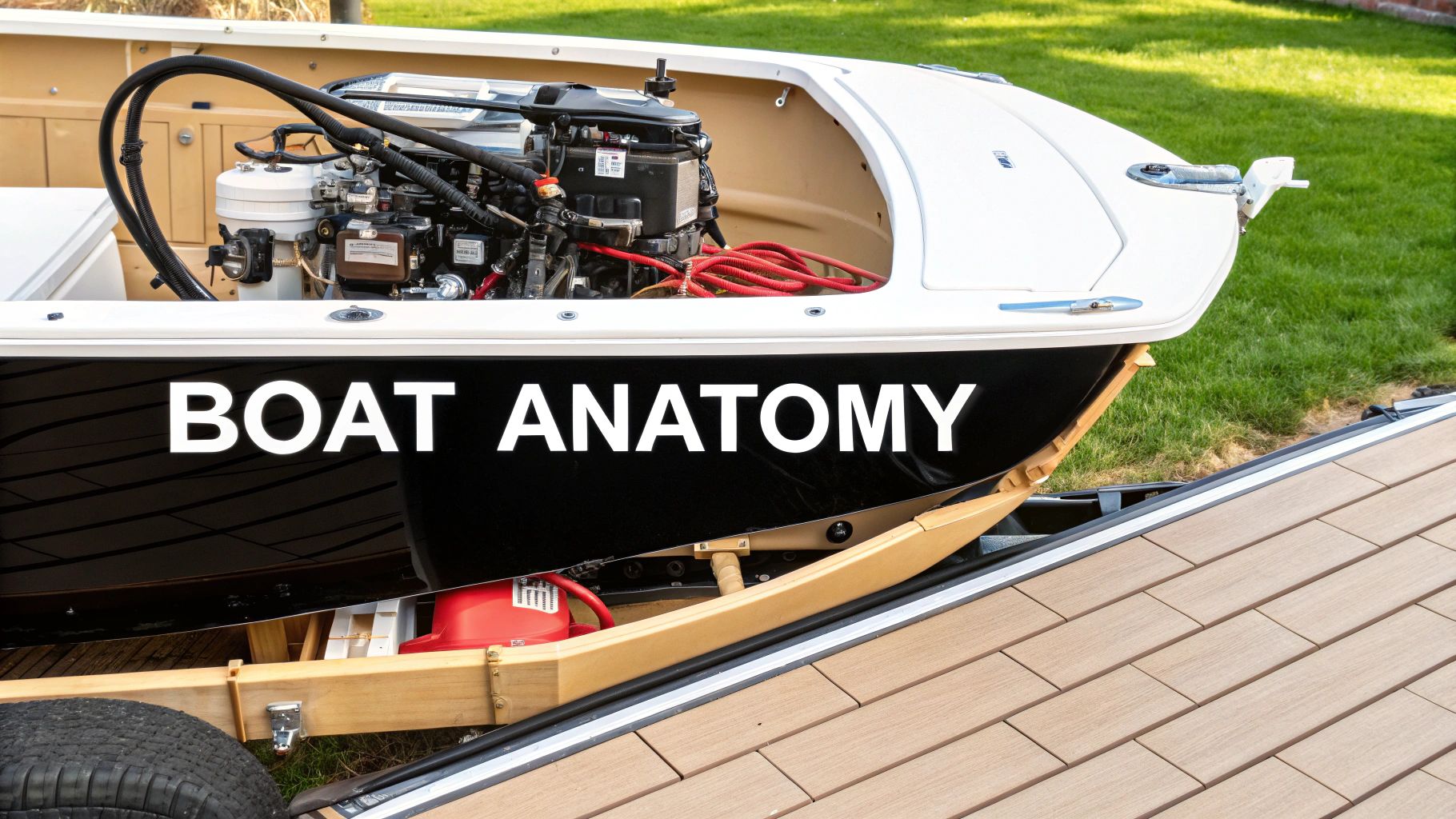
To really get what makes a deck boat tick, you have to look at how it’s built. It all starts with its V-shaped hull. This is a world away from the flat-bottomed design of a pontoon boat.
This V-shape lets the boat slice through the water instead of bouncing on top of it. For you, that means a much smoother, more stable ride in choppy water. It also delivers a sportier, more responsive feel when you're making turns.
On top of this performance base is the boat's main event: that huge, wide-open deck. A deck boat carries its beam almost all the way to the front. This clever design creates a massive, social "patio on the water," perfect for lounging.
Power and Practicality
A great hull and deck need the right engine to bring it all to life. Deck boats typically come with an outboard or a sterndrive. Each option has its own set of perks.
- Outboard Engines: You’ll see these mounted on the back of the boat. They're fantastic for their excellent power-to-weight ratio and are generally easier to maintain. A huge plus is that you can tilt them completely out of the water, which helps in shallow spots.
- Sterndrive (I/O) Engines: A sterndrive is a hybrid system with the engine inside the boat and the drive unit outside. This leaves the back of the boat completely open, creating an unobstructed swim platform. This is a massive draw for families and anyone into watersports.
Finally, you can't talk about a deck boat without mentioning its smart storage. These boats are packed with integrated compartments under seats, in the floor, and within consoles. This keeps gear out of the way, leaving the deck clear and safe for your crew.
Deck Boats vs Pontoon Boats Compared
When picking the perfect family boat, it often comes down to the deck boat versus the pontoon. They’re both champions of space and comfort. But how they handle on the water are worlds apart, giving each a distinct personality.
A deck boat is built on a V-hull, much like a traditional runabout. This design lets it cut through the water, giving it a more agile feel. It’s the go-to choice if you're planning on watersports or boating in choppier conditions.
Pontoons, on the other hand, ride on top of the water using two or three large tubes. This delivers incredible stability on calm lakes. Think of it as your own personal patio on the water.
If you want to see where these two fit into the bigger picture, our guide on the many types of recreational boats is a great place to start.
Performance and Ride Comfort
So, which one is right for you? Your decision will likely hinge on what you plan to do most.
The deck boat’s V-hull is a game-changer when the water gets a little rough, slicing through waves for a smoother ride. This design also gives it the power needed for wakeboarding and tubing. Pontoons are undeniably stable when anchored, but their ride can get bumpy when waves kick up.
This infographic breaks down some of the key differences at a glance.
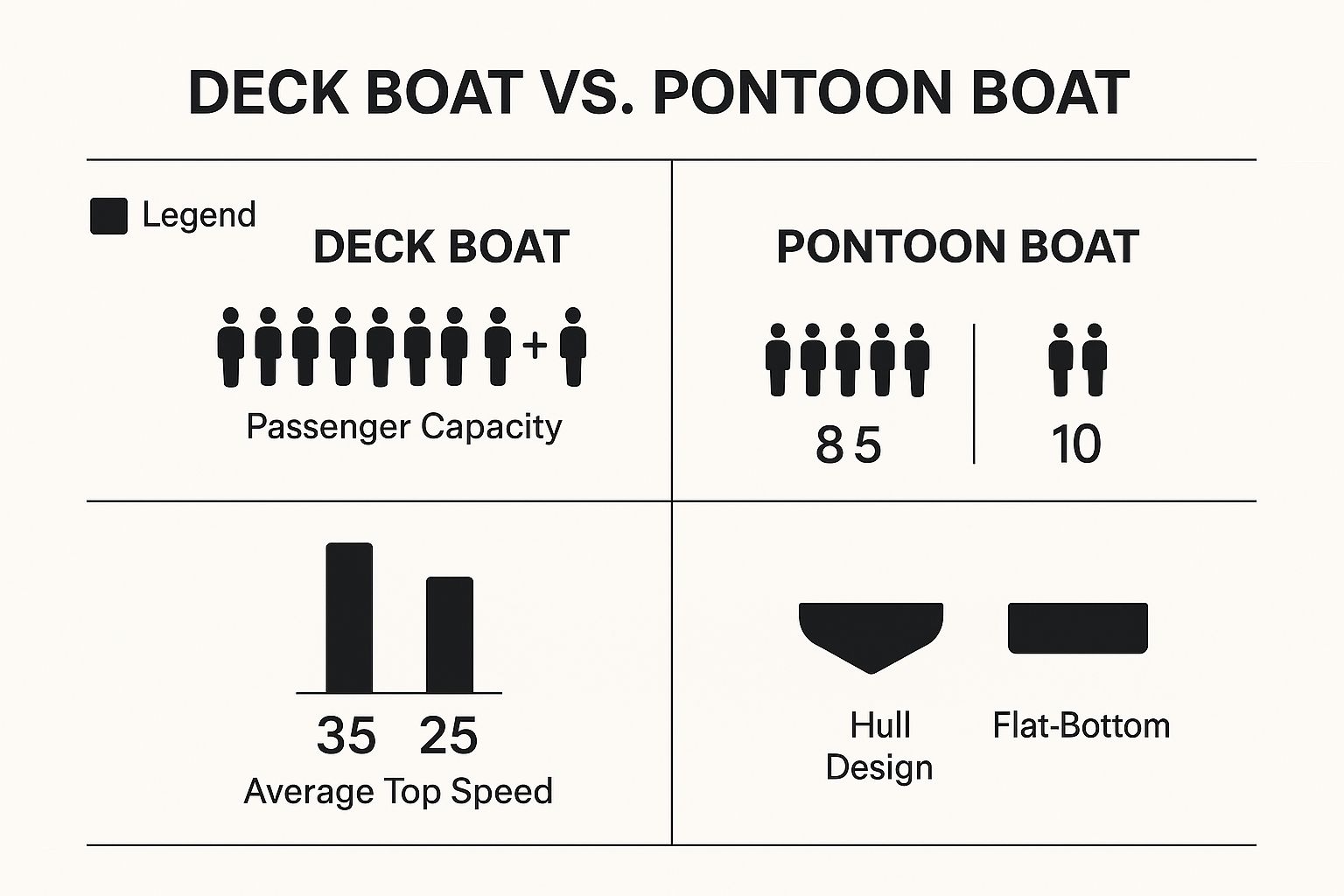
Deck Boat vs. Pontoon Boat Feature Showdown
To see how they stack up side-by-side, let's look at the core features that define each boat. This table cuts through the noise and lays out the fundamental differences.
| Feature | Deck Boat | Pontoon Boat |
|---|---|---|
| Hull Design | V-hull | Flat platform on 2-3 pontoons |
| Ride | Cuts through waves; smoother in chop | Rides on top of water; can be bumpy in rough seas |
| Handling | Agile, sporty, car-like feel | Slower, wider turns; very stable at rest |
| Best Use Case | Watersports, cruising, bigger lakes | Socializing, fishing, calm water cruising |
| Speed | Generally faster and more powerful | Slower, focused on leisure (though some tritoons are fast) |
| Seating | Wraparound seating, often in bow and cockpit | L-shaped couches, lounge-style seating |
| Capacity | Typically 8-12 passengers | Often holds more people, 10-15+ passengers |
If zipping across the lake is your top priority, the deck boat has a clear edge. But if your perfect day involves a big group and a quiet cove, a pontoon is tough to beat.
How People Use Deck Boats
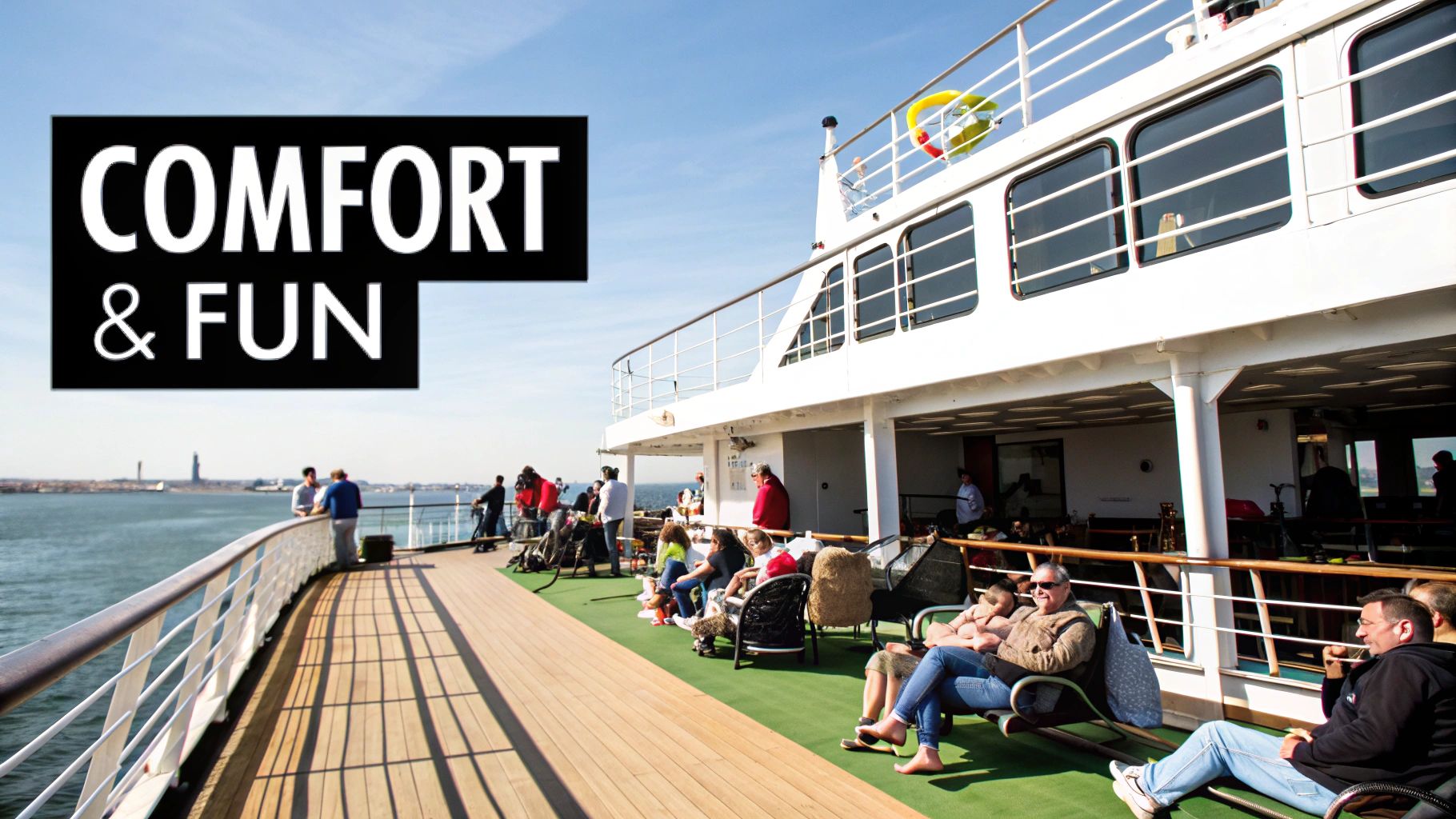
So, what does a day on a deck boat look like? The magic is how they adapt from a peaceful cruiser to a high-energy watersports machine. They are the Swiss Army knife of boating, built to keep everyone happy.
You might start with a calm cruise around the lake. With all that open space, everyone can find a comfortable spot to chat. The layout itself creates a great social platform where no one feels left out.
The Center of Fun and Adventure
As the day heats up, the deck boat’s performance side shines. Its powerful engine and responsive V-hull make it fantastic for pulling tubers and water skiers. The boat’s stability creates a safe platform for swimmers climbing in and out of the water.
A deck boat isn't just one thing; it's a social hub for cruising, a powerful towboat for sports, and a stable swim platform for relaxing. This "do-it-all" nature is precisely what makes it a favorite among families and groups with diverse interests.
Later, you can drop anchor in a quiet cove for a swim. The spacious deck becomes your private home base on the water. This versatility has made them very popular.
The global deck boat market hit around $2.79 billion in 2025, driven by a love for water sports and family boating. You can dig deeper into the deck boat market's growth on MarketReportAnalytics.com.
Choosing and Maintaining Your Deck Boat
So, you're thinking about buying a deck boat? That's fantastic. Getting this decision right is key to countless happy days on the water. It boils down to a few core things: the right size, whether to buy new or used, and the engine type.
First, think honestly about how many people you'll have on board most of the time. Then, you'll face the classic dilemma: a brand-new boat or a pre-owned model. Finally, you've got to understand the engine and its pros and cons for performance and upkeep.
If you want to dive deeper into that decision-making process, our article on things to consider when you are buying a boat is a great place to start.
Keeping Your Deck Boat in Top Shape
Once that beautiful boat is yours, the real work begins. Taking care of your boat protects your investment. It also ensures it’s ready for fun at a moment's notice.
Think of it this way: regular upkeep isn't just about the engine. It's about preserving the safety and fun of every single trip. A boat you can trust is a boat that lets you relax and make memories, even when you're miles from the dock.
A few simple habits can make all the difference.
- Engine Flushing: This is non-negotiable, especially in salt water. Always flush the engine with fresh water after every use. It's the best thing you can do to prevent corrosion.
- Hull Cleaning: Keep the bottom of your boat clean! A regular scrub to get rid of grime will improve performance and save you money on fuel.
- Systems Check: Before you cast off, do a quick "pre-flight" check. Make sure your batteries are charged, your lights work, and all safety gear is accessible.
If you live where it gets cold, winterization is absolutely essential. Properly preparing your boat for the off-season protects the engine, plumbing, and other systems from freezing temperatures.
Your Deck Boat Questions Answered
Even after covering the basics, you probably still have a few questions. That's completely normal! Let's tackle some of the most common ones to help clear things up.
Are Deck Boats Good For Rough Water?
They're certainly better than a pontoon boat when things get choppy. The V-shaped hull on a deck boat is designed to slice through waves. This makes for a much smoother and drier experience on a breezy day.
That said, they aren't true offshore vessels. If you plan on regularly heading into big, open water, a boat with a deep-V hull is a safer choice.
Can You Fish From A Deck Boat?
You absolutely can, and many people do! In fact, you'll see many deck boats marketed as "fish and ski" models. These come factory-equipped for a day of casting.
These hybrids often include features like livewells, mounts for a trolling motor, and swiveling fishing seats. The wide-open space is a huge plus. It gives you plenty of room to cast without bumping elbows.
The real magic of a deck boat is its incredible versatility. It may not be the best specialized fishing boat or the best specialized watersports boat, but it's exceptionally good at doing a little bit of everything you'd want on the water.
What Is The Difference Between A Deck Boat And A Bowrider?
This is a great question, as they can look similar at a glance. The key difference is in the hull shape and how it affects the layout.
A deck boat maintains its wide beam almost all the way to the bow, giving it that spacious front deck. It’s all about maximizing space for people and gear. A bowrider has a more traditional, pointed bow that tapers to a 'V'.
No matter which boat you choose, staying in touch is non-negotiable. It's a good idea to brush up on how to use a marine VHF radio with our guide to ensure you're always prepared.
At Boating Articles, we’re dedicated to providing the expert insights and hands-on advice you need for every voyage. Dive into our full library of guides and reviews at https://boating-articles.com to get the most out of your time on the water.
